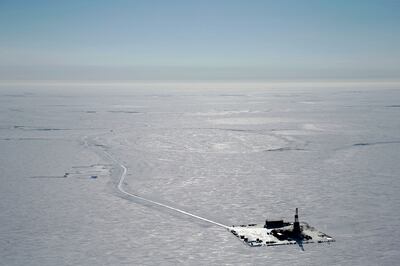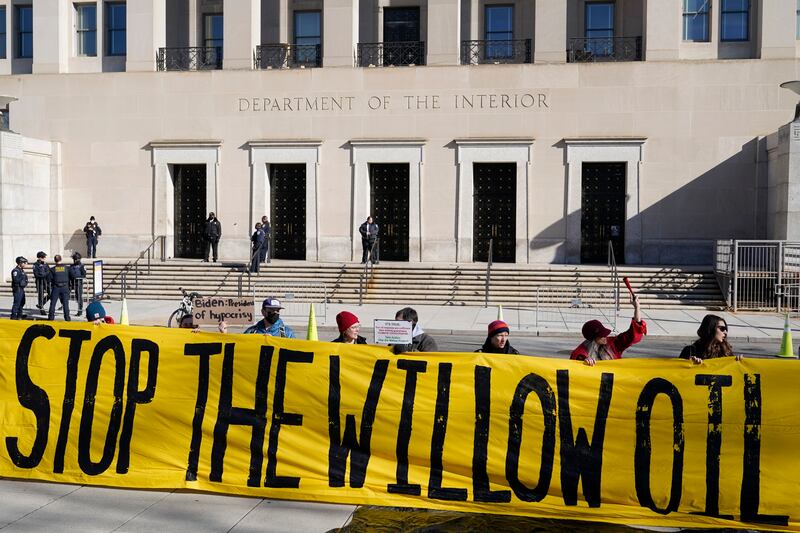US President Joe Biden is facing backlash from environmentalists after he approved a giant drilling operation, known as the Willow Project, in the Arctic.
Mr Biden's approval of the project marks a reversal on pledges he made during his presidential campaign.
“No more drilling on federal lands, period,” he said in 2020.
But what is the Willow Project, why is it so controversial and how will it affect US goals to reach net zero by 2050?
How much oil?
Barring any successful legal challenges, ConocoPhillips’s Willow Project will be constructed on the 9.3-million-hectare, federally owned National Petroleum Reserve in Alaska's pristine western Arctic.
At its peak, the $8 billion project would pump 180,000 barrels of oil each day. Burning all of that crude would result in at least 239 million tonnes of greenhouse gas emissions over 30 years — only a small percentage of the five billion metric tonnes of carbon dioxide the US produces annually.
Still, it is the same amount of carbon dioxide as is released by about 65 coal-fired power plants each year, or the equivalent emissions of 51 million petrol-powered cars over the same 30-year span, according to the US Environmental Protection Agency's emissions calculator.
Such a large project would undercut Mr Biden's goals of the US achieving a 50 per cent to 52 per cent reduction from 2005 levels of economywide net greenhouse gas pollution by 2030. It is also seen as a step back from his pledge to reach net-zero emissions by 2050.

What does the White House say?
One of the reasons the Biden administration approved the Willow Project involves legality: ConocoPhillips holds the leases and has a legal right to drill in the area. Cancelling the leases would bring a court case that, if lost, would set a precedent, cost the government millions of dollars in fees and do nothing to stop oil drilling.
Instead, the government made a deal with ConocoPhillips that shrank the total surface area to be developed at Willow by 60 per cent, including removing a sensitive wildlife area known as Teshekpuk Lake.
White House Press Secretary Karine Jean-Pierre told reporters that the oil company “has a legal right to those leases”.
“The department’s options are limited when there are legal contracts in place,” she said.
Are there any benefits?
Approval for the project comes as the Biden administration looks to reduce US reliance on foreign energy supplies.
Willow would come online right as shale oil and gas production in the states flanking the Rocky Mountains plateaus.
Last year's spike in petrol prices, caused largely by supply chain issues and the war in Ukraine, brought the issue into sharp focus and Mr Biden faced enormous political pressure to increase domestic oil supplies, which had been slashed during the pandemic.
Proponents say robust US domestic oil production is key for national security, and ConocoPhillips says the Willow Project could create over 2,500 construction jobs and about 300 long-term jobs.
What do Alaskans say?
In Alaska, indigenous leaders, local and state politicians, and labour unions have campaigned for the Willow Project, which they say will bring key revenue and jobs to the remote state.
One of the state's two senators, Lisa Murkowski, welcomed the Biden administration's approval on Twitter.
“We did it, Alaska!” she wrote.
But several Alaskan environmental groups are suing federal agencies in an attempt to block the project.
In their lawsuit, they say the Willow Project would significantly and negatively affect the region’s wildlife — including polar bears and caribou — as well as the area's air, water, lands and people.








